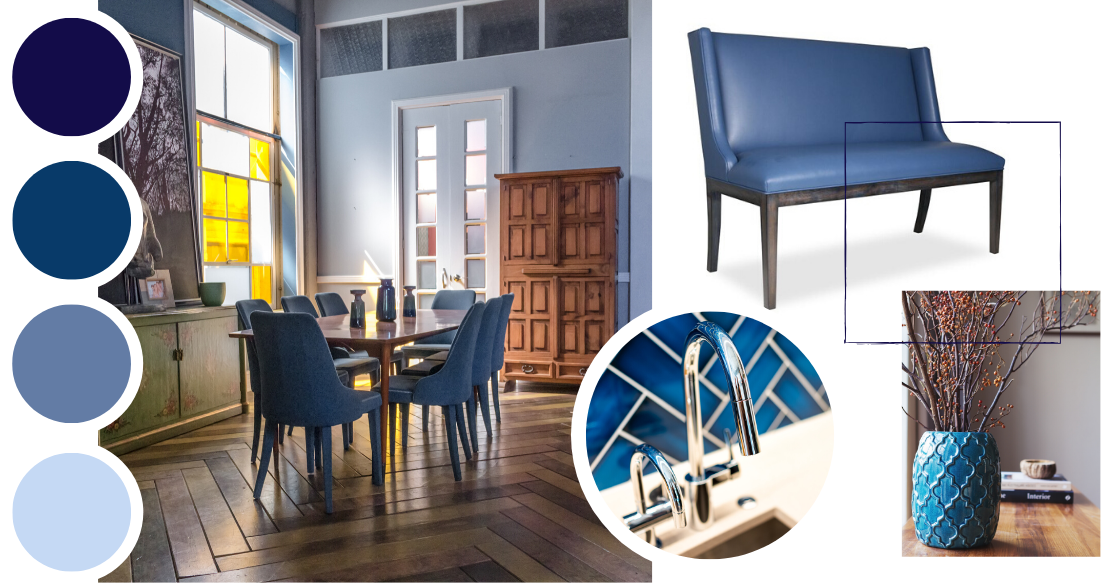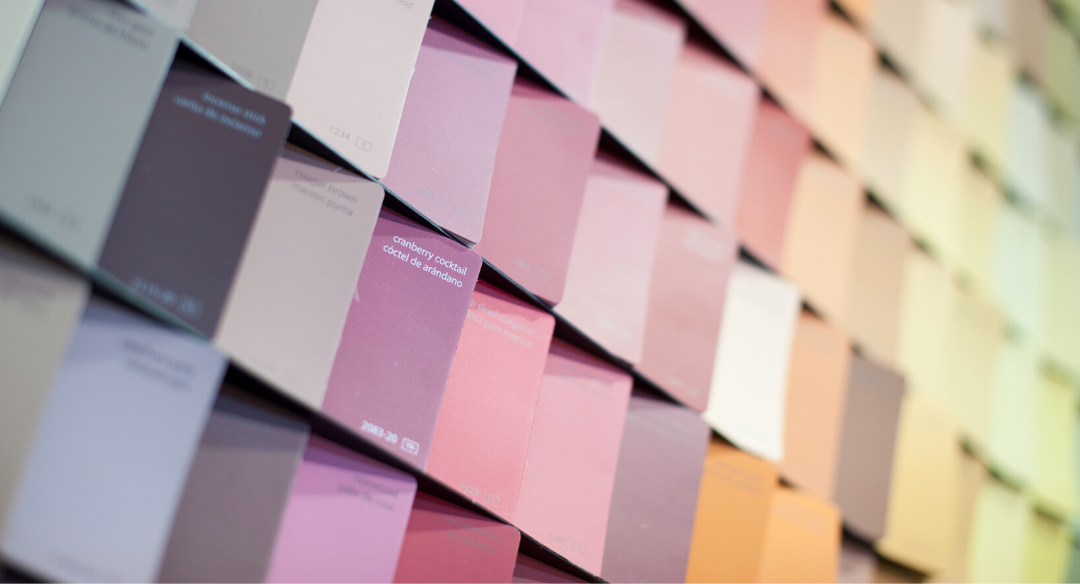Color plays a powerful role in interior design, influencing not just the aesthetic appeal of a space, but also the emotions and behaviors of those who inhabit it. Understanding color psychology—the study of how colors affect the human mind and emotions—can significantly impact your decor choices, helping you create an environment that aligns with your needs and preferences. Whether you’re looking to create a calming retreat, an energizing workspace, or a cozy home, the colors you choose will have a profound effect on the atmosphere. In this article, we’ll explore the impact of color psychology on your decor choices and how to use color to transform your home.
1. The Basics of Color Psychology
Color psychology is the scientific study of how colors influence human emotions, thoughts, and behaviors. It is based on the idea that certain colors have inherent qualities that can evoke specific feelings and responses. While cultural and personal preferences play a role in how we perceive colors, there are common associations that most people share.
- Warm Colors: Colors like red, orange, and yellow are typically associated with warmth, energy, and excitement. These colors tend to stimulate activity and conversation, making them ideal for social spaces like living rooms and dining areas.
- Cool Colors: Blues, greens, and purples are considered calming, soothing colors. They are often linked to tranquility and relaxation, making them perfect for spaces like bedrooms and bathrooms.
- Neutral Colors: Whites, blacks, grays, and browns are considered neutral. These colors provide balance and versatility, serving as a backdrop for more vibrant hues while also creating a sense of calm and sophistication.
Understanding these fundamental color associations can help guide your decor decisions, ensuring that the mood and purpose of each room align with the colors you choose.

2. Red: Passion and Energy
Red is one of the most powerful colors in the spectrum. It is known to evoke strong emotions and is often associated with passion, love, and energy. However, red can also be a bit overwhelming if overused, as it can increase feelings of excitement and even agitation.
- Best for: Living rooms, dining rooms, or spaces where social interaction is important. Red can stimulate conversation and appetite, making it a great choice for dining areas or kitchens.
- How to Use: Use red as an accent color rather than the dominant hue. Consider red throw pillows, rugs, or artwork that provide a burst of color without overwhelming the room. If you love red but find it too bold for large surfaces, try incorporating it through smaller decor elements like lamps, curtains, or vases.
3. Blue: Calm and Focus
Blue is often considered a calming and relaxing color, making it ideal for spaces where tranquility and focus are needed. From pale sky blue to deep navy, blue promotes a sense of peace and serenity, making it one of the most popular choices for bedrooms and bathrooms.
- Best for: Bedrooms, offices, or any space where relaxation, calm, and focus are essential. Blue is known to lower blood pressure and reduce stress, making it perfect for creating a soothing atmosphere.
- How to Use: Light blue walls can help create a peaceful and serene bedroom, while navy blue accents can add sophistication to a living room or dining space. For a more modern, edgy look, combine blue with bold colors like orange or gold for a striking contrast.
4. Green: Balance and Harmony
Green is strongly associated with nature, growth, and renewal. It represents balance, stability, and harmony. Because of its connection to nature, green is often considered a grounding color that promotes a sense of well-being.
- Best for: Living rooms, kitchens, or spaces that need a sense of balance and vitality. Green’s ability to calm the mind while energizing the body makes it perfect for spaces where both relaxation and activity are important.
- How to Use: Green can be used effectively in almost any room. Soft sage greens work well in bedrooms or bathrooms, while vibrant shades of emerald or lime green can add a fresh, modern feel to kitchens or living rooms. Adding plants to a green-themed space can enhance the calming, nature-inspired vibe.
5. Yellow: Optimism and Cheerfulness
Yellow is one of the most cheerful and energetic colors in the color spectrum. It is often linked to happiness, optimism, and creativity. Yellow can make a space feel sunny and welcoming, but it’s important to use it sparingly, as too much yellow can become overwhelming and create anxiety.
- Best for: Kitchens, dining rooms, or spaces where energy and creativity are important. Yellow is a great color for areas where you want to encourage conversation or stimulate intellectual activity.
- How to Use: Use yellow as an accent color rather than the main color of the room. Bright yellow throw pillows, artwork, or a cheerful yellow chair can add a pop of color and infuse the space with energy without making it overwhelming. Softer shades of yellow, like butter or pastel yellow, can be more subtle and calming, perfect for bedrooms or entryways.

6. Orange: Warmth and Excitement
Orange is a color full of energy, enthusiasm, and warmth. It is often used to create an upbeat, social atmosphere. Orange can encourage communication and creativity, making it a good choice for spaces where you want to foster energy and interaction.
- Best for: Living rooms, playrooms, or spaces where you want to encourage fun and creativity. Orange is great for high-energy rooms where family members or guests will gather and interact.
- How to Use: Similar to red, use orange as an accent color to avoid overwhelming the space. A few vibrant orange throw pillows or a statement piece of orange artwork can add a lively touch. You can also mix orange with neutral tones like gray or brown for a more balanced and sophisticated look.
7. Purple: Luxury and Creativity
Purple is often associated with royalty, luxury, and creativity. It can have a calming effect, yet it also inspires imagination and artistic expression. Purple’s rich and dramatic nature makes it a great color to use in small doses to create a sense of opulence.
- Best for: Bedrooms, libraries, or spaces designed for creativity and reflection. Purple can evoke a sense of mystery and sophistication, making it a great choice for creating a luxurious ambiance.
- How to Use: Lighter shades of lavender can be used to create a soft, serene environment, while deep purples like aubergine or plum can add drama and richness to a living room or dining room. To avoid making the room feel too dark, pair purple with lighter colors like white, gray, or gold accents.
8. Neutral Colors: Subtle Sophistication
Neutral colors, including whites, grays, blacks, and browns, serve as the foundation of many modern design schemes. These colors are versatile and timeless, offering a blank canvas that allows other elements of the decor to shine. They create a sense of sophistication and balance in a room without overwhelming the senses.
- Best for: Any room in the house, particularly those where you want the focus to be on furniture, artwork, or other statement pieces. Neutrals are ideal for creating a minimalist, calming environment.
- How to Use: Neutrals work well as base colors for walls, furniture, and flooring. To add depth, layer various neutral tones in your design, such as light gray walls with dark wood furniture and soft beige throw pillows. Neutral colors also provide a great backdrop for vibrant accent colors, making them highly adaptable to changing design trends.
9. The Power of Accent Colors
Accent colors can make a significant impact on your decor, providing contrast and visual interest. When using accent colors, it’s important to balance them with the dominant colors in the room to create a harmonious space.
- Bold Contrasts: Pairing complementary colors, like blue and orange or red and green, can create a striking contrast that energizes the space. However, it’s important to use these combinations thoughtfully to avoid overwhelming the room.
- Subtle Accents: If you prefer a more subtle approach, use muted versions of accent colors, such as pastel hues or soft metallics like gold or silver. These add elegance without dominating the space.
10. Color Trends in Modern Decor
In recent years, color trends in home decor have leaned toward more neutral, earthy tones combined with bold accents. Shades like terracotta, mustard yellow, and dusty rose are gaining popularity for their warmth and versatility. Additionally, colors like navy blue and deep green continue to be trendy choices for creating sophisticated, serene spaces.
- Eco-friendly and Natural Colors: As people become more mindful of sustainability, earthy tones like moss green, olive, and clay are becoming more prevalent in interior design. These colors are inspired by nature and create a grounding, organic feel in the home.
Conclusion
Color psychology is a powerful tool that can help guide your decor choices and influence the mood of your home. By understanding the emotional impact of different colors and how they interact with each other, you can create a space that reflects your personality, promotes well-being, and enhances the function of each room. Whether you’re looking to energize a social space, calm a bedroom, or create balance throughout your home, color plays a crucial role in shaping the atmosphere. Experiment with different hues and combinations to find the perfect color scheme that resonates with you and transforms your living space.


